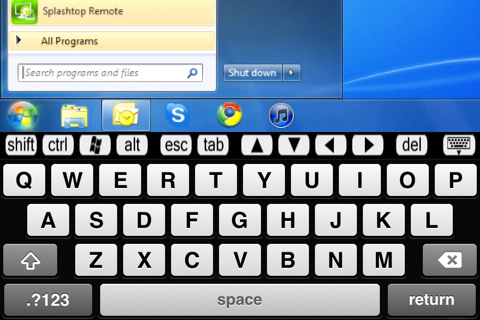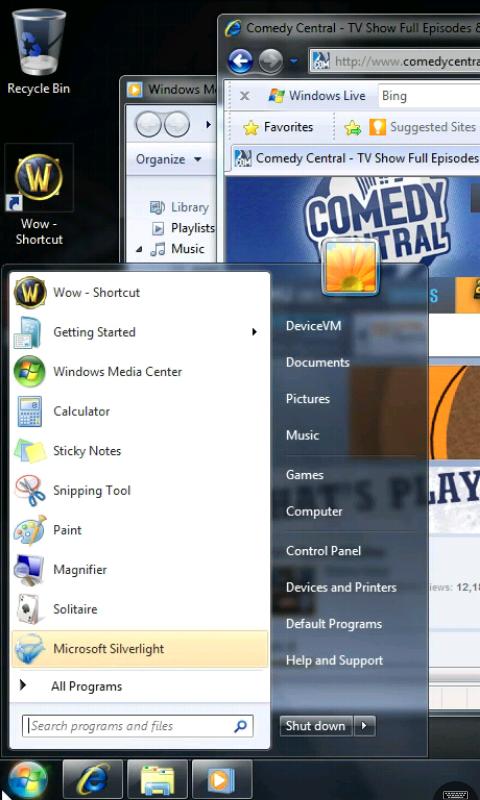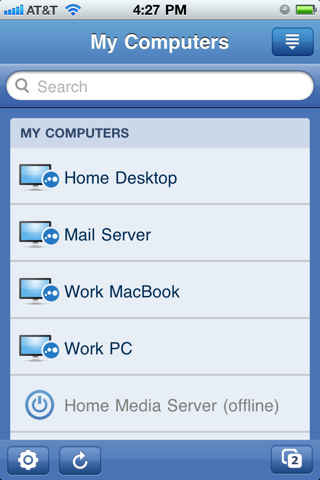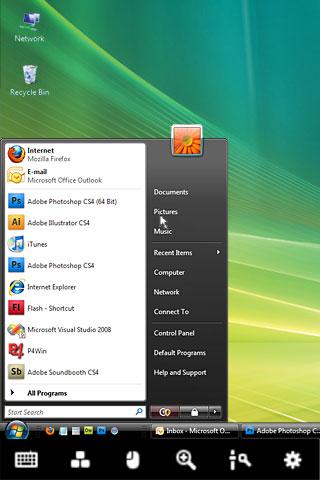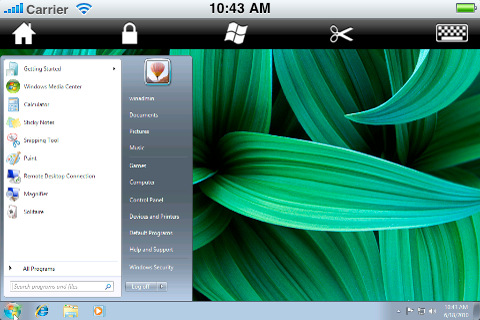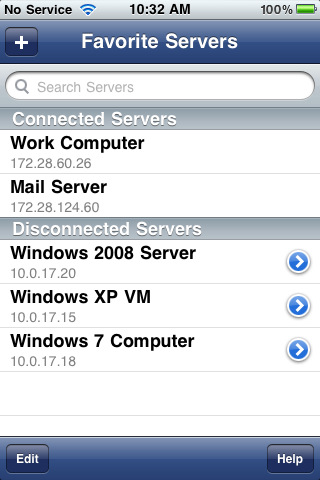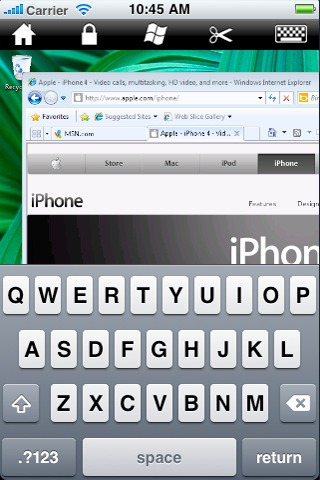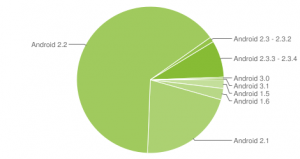Friday, July 29. 2011
Trafic IP mobile : le streaming vidéo au coeur de la croissance
Via ItEspresso
-----
Selon Allot, la vidéo s'installe au coeur du trafic IP mobile au niveau mondial au grand dam des opérateurs. Sur ce segment, YouTube se distingue.
Le trafic IP sera assuré à 50% par la vidéo en 2012 et il a d’ores et déjà dépassé celui généré par le peer to peer en 2010.
De surcroît, les prévisions de Cisco précisent qu’il ira crescendo. C’est un constat similaire qui peut être fait si l’on dissèque le trafic IP mobile.
Au cours du premier semestre 2011, 39% du trafic IP a été généré par le streaming vidéo selon une enquête* réalisée par Allot Communications.
Sur la même période, le trafic IP mobile a augmenté de 77% (contre 73% sur le deuxième semestre 2010).
YouTube tient les rênes du streaming vidéo sur mobile comptant pour 52% de sa totalité.
Près d’un octet sur quatre atterrissant sur les mobiles (22% du trafic IP précisément) provient des serveurs de la plate-forme vidéos de Google.
Certes, YouTube est un « ténor de la bande passante » mais, dès que l’on parle part de marché, c’est Skype, le service de VoIP acquis récemment par Microsoft, qui se taille la part du lion.
La voix sur IP a augmenté de 101%, et Skype avec 82% du trafic règne sans partage.
Et de partage, il est question lorsqu’on évoque la messagerie instantanée.
Talonné de très près par Windows Live avec 25%, Yahoo Messenger est premier avec 29% du trafic IP mobile lié à la messagerie instantanée.
Suivent la messagerie instantanée QQ en langue chinoise (18%) puis Google Talk avec 12%.
La part substantielle du streaming vidéo dans le trafic IP mobile ne saurait également cacher l’envolée des réseaux sociaux.
Twitter peut s’enorgueillir d’une croissance de 297% sur les mobiles au cours du premier semestre 2011 tandis que Facebook a augmenté de 166%.
On pourra s’en étonner : la navigation sur Internet n’arrive qu’à la troisième place avec 25% du trafic IP, derrière le partage de fichiers (29%).
Et si le trafic IP sera servi par une croissance des infrastructures, de leur côté, les opérateurs mobiles freinent des quatre fers.
51% d’entre eux affirment ne plus proposer d’abonnements avec données illimitées.
C’est un engorgement des réseaux 3G notamment en zone urbaine qui apparait comme le coupable idéal avec en filigrame le retard de la 4G LTE.
Le marché semble également s’orienter vers un usage « téléguidé » de la bande passante.
Ainsi, 32% des opérateurs ont mis en place un service de passe-droit quand il s’agit de certaines applications ou quand l’illimité est limité à certains usages de la 3G.
Ces données, si elles sont riches d’enseignement, ne renseignent pas sur les pics de trafic générés.
La 4G LTE (avec son débit pic de 1Gigabit/s) puis sa version avancée seront vitales pour les absorber.
Notamment lorsqu’il s’agira de streaming vidéo d’évènements « live ».
Thursday, July 28. 2011
The History of Android Version Releases
Via Android Tapp
-----
![The History of Android Version Releases [Infographic]](http://blog.computedby.com/cby/images/46_1313483255_0.jpg)
Check out this infographic by [x]cubelabs showing the history of Android version releases to date… even tossing in a factoid of when Android was officially started then acquired by Google. The graphic shows key feature highlights in each milestone and concludes with today’s snapshot, which shows most Android devices with Android 2.2 (Froyo). Have a look!
Wednesday, July 27. 2011
Qualcomm’s Awesome Augmented Reality SDK Now Available For iOS
Via TechCrunch
-----
Back around July of last year, Qualcomm launched a software development kit for building Augmented Reality apps on Android. The idea was to allow Android developers to build all sorts of crazy AR stuff (like games and apps that render things in live 3D on top of a view pulled in through your device’s camera) without having to reinvent the wheel by coding up their own visual-recognition system. It is, for lack of a better word, awesome.
And now it’s available for iOS.
For those unfamiliar with Augmented Reality — or for those who just want to see something cool — check out this demo video I shot a year or so back:
Sometime in the past few hours, Qualcomm quietly rolled a beta release of the iOS-compatible SDK into their developer center. This came as a bit of a shock; Qualcomm had previously expressed that, while an iOS port would come sooner or later, their main focus was building this platform for devices running their Snapdragon chips (read: not Apple devices).
And yet, here we are. This first release of the SDK supports the iPhone 4, iPad 2, and fourth generation iPod Touch — none of which have Snapdragon CPUs in them. Furthermore, this release supports Unity (a WYSIWYG-style rapid game development tool) right off the bat, whereas the Android release didn’t get Unity support until a few months. Developers can also work in straight in Xcode if they so choose.
This platform lowers the “You must be this crazy of a developer to ride this ride” bar considerably, so expect an onslaught of Augmented Reality apps in the App Store before too long.
Monday, July 25. 2011
Three remote desktop apps worth a look
Via TechRepublic
-----
By Scott Lowe
If your organization allows remote access to systems via remote desktop tools, there are a number of apps for the iPhone and for Android devices that make it a breeze to work anytime from anywhere. In this app roundup, I feature three remote desktop tools that work in slightly different ways.
Splashtop Remote Desktop
Splashtop Remote Desktop is a high-performance app that supports multiple monitors and desktop-based video. The mobile device-based Splashtop Remote Desktop app connects to a small client that is installed on your desktop PC, which can be running Windows XP, Windows Vista, or Windows 7 or Mac OS X 10.6.Perhaps the most significant downside to Splashtop Remote Desktop is that connections are required to be made solely over Wi-Fi networks; this limits, to a point, the locations from which the tool can be used. However, most Wi-Fi connections are faster than 3G, so performance should be good.
Splashtop Remote Desktop is available for the iPhone and for Android devices. At $1.99 for the iPhone version and $4.99 for the Android version, this app will certainly not break the bank.
Figures A and B are screenshots of the app from iPhone and Android devices, respectively.
Figure A
Splashtop Remote Desktop for the iPhone
Figure B
The Android version of Splashtop Remote Desktop
LogMeIn Ignition
LogMeIn provides a robust, comprehensive remote desktop tool. LogMeIn Ignition requires you to install a client component on the desktop computer you wish to control.LogMeIn Ignition supports 32-bit and 64-bit Windows 7, Windows Vista, Windows XP, Windows Server 2003, Windows 2008 and 32-bit Windows 2000, and Mac OS X 10.4, 10.5, and 10.6 (PPC and Intel processors are supported). The Mac version is missing features such as drag and drop file transfer, remote sound, and integration with LogMeIn’s centralized reporting tool; although, for occasional remote access from a handheld device, these features are probably not that critical.
LogMeIn Ignition is a client component that works on Android and Apple devices including the iPhone and the iPad. At $29.99, you will need to be able to realize real value from the app in order to justify the purchase. LogMeIn Ignition definitely isn’t a “drive by download.”
LogMeIn Ignition is not intended to be a “one off” remote access tool; it aggregates all of your remote connections into one view, making it easier to manage a plethora of remote systems (Figure C). Again, each managed system must have the LogMeIn client installed.
Figure C
LogMeIn Ignition’s computer selection page
Figures D and E are screenshots of LogMeIn Ignition on an Android device and an iPhone, respectively.Figure D
Android-based version of LogMeIn Ignition
Figure E
iPhone-based version of LogMeIn Ignition
WinAdmin
WinAdmin is another tool I have used for remote access. The app relies on Microsoft’s standard RDP implementation and does not require the installation of additional client software on managed computers, which makes it a good solution for remote desktop access as well as remote server desktop access. If you’re using WinAdmin to remotely access servers, you’ll probably need some kind of VPN tunnel in place, or you’ll need to be sitting behind your organization’s firewall in order to allow the tool to work its magic.WinAdmin is available for the iPhone, iPad, and iPod Touch; there is no Android version. At $7.99, this app might be considered in the moderately high price range for some, but if it’s being used to support a server farm, it’s certainly affordable.
The screenshots in Figures F, G, and H give you a look at WinAdmin.
Figure F
WinAdmin’s landscape-mode view is more natural for most users.
Figure G
Store connection information for all of your remote systems… just lock your phone when not using WinAdmin.
Figure H
WinAdmin’s portrait mode shows the keyboard at the bottom and menu across the top of the display.
What remote desktop app do you recommend?
These are just three tools that are worthy of consideration for your organization’s remote access needs.
-----
Personal comments:
Remote access to desktops are not a 21th century innovation, as it almost exists since the first network was set up, but above solutions and Splashtop in particular bring to us one cross platform solution (streamer available on Mac and PC and remote clients available on all mobile platforms) that may help us to determine what can we seriously do with these tablets! :-)
Tuesday, July 19. 2011
Time-lapse video shows how iPhones move across Europe
Via geek.com
-----

Back in April, the news of Apple’s somewhat-secret iPhone location-data-tracking broke to much disapproval. The Internet was abuzz with outraged iPhone users concerned about their privacy. With a few months’ time, the dust has settled a bit, and a few people have even figured out ways to put this technology to good use.
Take Crowdflow’s Michael Kreil for example. Kreil took location data from 880 iPhones all across Europe over one month’s time, he aggregated the data from April 2011, and then visualized it by creating an amazing time-lapse video. We’re able to see how iPhone customers move across the different countries in Europe. The video definitely has a psychedelic feel to it with its bright undulating lights flying around the eye-catching-colored maps of Europe.
The map style resembles a bunch of fireflies buzzing about Europe. The lights fade on and off to represent when data is turned off, presumably at night when we tend to turn off our phones when going to sleep. Kreil said that most iPhones don’t collect data at night since the owner is, typically, not moving. Because of this, the image becomes blurry at night, and the lights dissolve.
Kreil said that he couldn’t decide on a color scheme, so he made three videos of the same data, but in different colors. We chose our favorite below, but make sure to watch the others if you have a different color preference. We also recommend watching the videos in full HD and in full-screen mode.
He also noted that he’d like to see the same project applied to the entire globe, which makes our little time-lapse-loving geek hearts flutter with excitement.
-----
More videos @ CrowdFlow
Monday, July 18. 2011
Google Releases Android 3.2 SDK To The Masses
Via Hot hardware
-----
Android 3.2 isn't unheard; the OS was first introduced with the MediaPad
tablet a few weeks back, and a few days ago, the Motorola Xoom started
receiving the update. But it's been a mostly quiet release. Google
has just released new details on what exactly v3.2 adds to the
Honeycomb mix, and more importantly, they've released the updated SDK
tools for developers to start taking full advantage.
Google calls this an incremental update, which adds "several new
capabilities for users and developers," and the API is now up to level
13. Included in the new release? Optimizations for a wider range of
tablets, Compatibility zoom for fixed-sized apps, Media sync from SD card, and Extended screen support API.

With this out in the open, we suspect more and more tablets will see the
v3.2 update slide down shortly, and hopefully new app updates will be
taking advantage of it. Any devs out there given this a whirl?
-----
Monday, July 11. 2011
Five reasons Android can fail
-----
 I use Android every day both on my Droid II smartphone and my Barnes & Noble Nook Color e-reader/tablet. I like it a lot. But, I also have concerns about how it’s being developed and being presented to customers.
I use Android every day both on my Droid II smartphone and my Barnes & Noble Nook Color e-reader/tablet. I like it a lot. But, I also have concerns about how it’s being developed and being presented to customers.
Before jumping into why I think Android faces trouble in the long run, let me mention one problem I don’t see as standing in Android’s way: The Oracle lawsuits Yes, Oracle claims that Google owes them billions in damages for using unlicensed Java technology in Android’s core Dalvik virtual machine.
I follow patent lawsuits and here’s what going to happen with this one. It will take years and millions of dollars in legal fees, but eventually Google will either beat Oracle’s claims or pay them hefty licensing fees. So, yes, one way or the other Google, and to a lesser extent Oracle, will spend hundreds of millions on this matter before it’s done. But, so what?
The mobile technology space is filled with patent and licensing lawsuits. When I checked on these lawsuits in mid-October there were dozens of them. Since then, Apple has sued Samsung; Dobly has sued RIM; and Lodsys, a patent troll, vs. Apple and all its iOS developers, By the time I finish writing this column someone will probably have sued someone else!
The end-result of all this, besides lining the pockets of lawyers, is that we’re all going to have pay more for our tablets and smartphones. It doesn’t matter who wins or who loses. Thanks to the U.S.’s fouled up patent system, everyone who’s a customer, everyone who’s a developer, and everyone’s who in business to make something useful is the loser.
That said, here’s where Android is getting it wrong.
1. Too many developer versions
When Google first forked Android into two versions–The 2.x branch for smartphones and the 3.x for tablets–I didn’t like the idea. I like it even less now.
According to the Android Developers site, there are eight (8!) different versions of Android with market presence. If we ignore the out-dated Android 1.5 and 1.6, that still leaves us with six shipping versions that a developer needs to keep in mind when he or she is creating or updating a program. In the case of the 2.x and 3.x lines that’s a lot of work. Oh, and yes there are now two versions of 3.x: 3.0 and 3.1.
Who can keep up with this? I couldn’t. But, wait there’s more!
2. Too many OEM versions
You’d think that Android 2.2 on a Droid II would be the same on the Samsung Galaxy Pro. You’d think wrong. Every original equipment manufacturer (OEM) insists on tweaking the software and adding their own particular programs to each phone. Sometimes, as James Kendrick points out, the same hardware doesn’t even work with Android on the exact same model.
Kendrick has found that the useless microSD card slot in the Motorola XOOM, even after its Android 3.1 update, still doesn’t work. Or, to be exact, it won’t work in the U.S. In Europe, XOOM users will get a fix that will let them use microSD cards.
Argh!
Here’s a history lesson for Google and the rest of the movers and shakers of Android. I’ve seen a “common” operating system used in this way before during a technology boom. Once, it was with the pre-PC microcomputers. They all ran CP/M-80, but every vendor had their own little tricks they added to make their computers “better.” Then along came PC-DOS, soon to be followed by MS-DOS, and all those companies-KayPro, Osborne, and IMSAI-became answers in computer trivia games.
How did Microsoft make its first step to becoming the Evil Empire? By delivering the same blasted operating system on every PC. If users can’t count on using the same programs and the same hardware accessories, like microSD cards, on Android, they’re not going to stick with Android devices. If things don’t get better with Android, who knows, maybe Windows 8 will have a shot on tablets after all!
3. Still not open enough
Google, for reasons that still elude me, decided not to open-source Android 3.x’s source code. This is so dumb!
I’m not talking about playing fast and loose with open-source licenses or ethics-so Google really stuck its foot into a mess with this move. No, I’m saying this is dumb because the whole practical point of open source make development easier by sharing the code. Honeycomb’s development depends now on a small number of Google and big OEM developers. Of them, the OEM staffers will be spending their time making Honeycomb, Android 3.0, work better with their specific hardware or carrier. That doesn’t help anyone else.
4. Security Holes
This one really ticks me off. There is no reason for Android to be insecure. In fact, in some ways it’s Not insecure. So why do you keep reading about Android malware?
Here’s how it works. Or, rather, how it doesn’t work. Android itself, based on Linux, is relatively secure. But, if you voluntary, albeit unknowingly, install malware from the Android Market, your Android tablet or smartphone can’t stop you. Google must start checking “official” Android apps for malware.
Google has made some improvements to how it handles Android malware. It’s not enough.
So until things get better, if you’re going to download Android programs by unknown developers, get an Android anti-virus program like Lookout. Heck, get it anyway; it’s only a matter of time until someone finds a way to add malware to brand-name programs.
5. Pricing
Seriously. What’s with Android tablet pricing? Apple owns the high-end of tablets. If someone has the money, they’re going to get an iPad 2. Deal with it. Apple’s the luxury brand. Android’s hope is to be the affordable brand. So long as OEMs price Android’s tablets at $500 and up, they’re not going to move. People will buy a good $250 Android tablet, which is one reason why the Nook is selling well. They’re not buying $500 Android tablets.
Here’s what I see happening. Android will still prosper… right up to the point where some other company comes out with an affordable platform and a broad selection of compatible software and hardware. Maybe that will be webOS, if HP drops the price on its TouchPads. Maybe it will be MeeGo. Heck, it could even be Windows 8. What it won’t be though in the long run, unless Android gets its act together, will be Android.
-----
Personal Comments:
In order to counteract a bit what is a kind of severe or pessimistic view for Android's future, I would like to underline that Android has to face major hardware evolution in a very short time. Duplicity of hardware constructors that have jumped in the Android adventure has also participated to version split. But as far as I have seen, it seems to me that constructors are pretty fast in proposing to their customers upgrades of their in-house Android versions, in order to stick to the very last 'official' Android version (the only one that all consumers expect to have on their mobile device). For example, HTC has nicely managed this while adding a very impressive GUI on the top of Android, that kind of GUI that has hardly suggested that Android can be a real competitor to iOS. So I do not see multiple Android versions as a negative point but more as a rewarding one.
In the same time Apple pushes users to upgrade their devices to the very last iOS version without that much concern about user's wishes. When compiling a program dedicated to Apple devices, you have to declare if it is targeting iPhone/iPod and/or iPad with specifying a minimum compatible version (because of core libraries evolution), which seems very similar to me to handle kind of distinct versions of a similar OS... thus being similar to what's occur at the Android OS level, but may be in less 'democratic' way for the Apple's OS.
About the points 3 and 4, I think this concerns absolutely every mobile OS, and for some of them we may even not being aware about existing problems or privacy issues (refer to GPS tracking issue on iPhone etc...).
Concerning the pricing, the ASUS eee Pad Transformer
is an excellent example to what we can expect about (affordable) prices
for mobile device based on Android OS. New mobile phones/tablets models are pretty expensive
mainly because they include very last chips (Tegra 2, Tegra 3, dual-core
CPU etc...). 6 months later the same 'top-level' device can be acquire
for one buck just by renewing a mobile network subscription.
Android OS is moving pretty fast in comparison to its direct competitors (on-screen widgets are typically something that is missing in the iOS), and MeeGo or Bada seems like just born dead OS. It sounds pretty clear that a ready to use and effective mobile OS
is much more easier to adopt for a hardware constructor than a brand
new one built in-house. It looks like much more an optimal solution to
invest effort in customizing Android OS like HTC did in a pretty
effective way than re-inventing the wheel.
The strength of Android is its community, which is just growing fast... very fast!
Friday, July 08. 2011
USA : chronique de la mort annoncée de l’Internet mobile illimité
Via ITespresso
-----
Les offres mobile Internet 3G étaient en danger outre-Atlantique depuis un an. Leur fin est maintenant actée : Verizon, deuxième opérateur national, n'en vendra plus.
Les offres 3G illimitées sont en passe de disparaître aux États-Unis.
En cause, la limite théorique de débit des réseaux mobiles, qui serait atteinte rapidement si les mobinautes ne sont pas limités dans leur consommation effrénée. Une ritournelle souvent entendue en France également.
Le plus important opérateur du pays, AT&T, les avait déjà supprimées l’année dernière.
Son principal concurrent, Verizon Wireless, le rejoint ce 7 juillet. Le modèle choisi par les deux opérateurs repose sur un forfait fixe et des surcharges en cas de dépassement explique le site eWeek.
Par exemple, Verizon demandera 30 dollars par mois pour 2 Go de données, puis facturera 10 dollars par Go supplémentaire.
T-Mobile, le petit quatrième du marché, offre encore des abonnements illimités « à la française » où le débit est fortement réduit passé un certain seuil.
Mais avec son rachat par AT&T pour 39 milliards de dollars, il ne restera probablement bientôt plus qu’un seul opérateur majeur pour proposer de vraies offres illimitées : Sprint Nextel.
Aux États-Unis, cet abandon provoque pourtant la colère des consommateurs.
Parul Desai, conseiller sur les politiques de télécommunication pour Consumers Union, l’équivalent américaion de l’UFC – Que Choisir, a exprimé le désarroi des mobinautes américains au journal Boston Globe.
Il craint que même si les mobinautes utilisent moins de 2 Go de volume par mois (présentés par les opérateurs comme la moyenne de consommation, et donc utilisés comme base pour leurs offres standard), ils se limiteront dans leurs usages . « Peut-être que vous n’utiliserez pas [le service de VoD] Netflix, ou peut-être que vous n’essaierez pas une nouvelle application« , explique-t-il.
Sachant que le haut débit, fixe et mobile, était censé devenir un terreau pour l’innovation et la croissance lors du plan de relance de Barrack Obama en 2009, de telles limites pourraient facilement tuer dans l’œuf tout nouvel usage innovant.
En espérant que les opérateurs français ne suivent pas l’exemple de leurs comparses américains.
Friday, June 03. 2011
HTCdev coming Summer 2011 with OpenSense API
Via Slashgear
-----
Peter Chou already unveiled HTCdev and the OpenSense SDK during his Uplinq 2011 appearance yesterday, but the company has now fleshed out the details of the developer-friendly proposal. Set to launch properly this coming summer, HTCdev will offer developers guidance and tools to create apps for, and modify, HTC smartphones. Meanwhile, the new SDK will allow for integration with some of HTC’s custom tweaks to its range.
For instance, HTC had promised that third-party developers would be able to code apps that take advantage of the digital stylus accompanying the HTC Flyer, and it’s the OpenSense SDK which will unlock the APIs for them to do that. It will also allow them to use the 3D display as on the EVO 3D.
Right now, interested developers can sign up for more information at HTCdev.com ahead of both program and SDK going live in the next few months. The project follows HTCpro, launched last year to offer mobile consulting and app development, and comes on the heels of HTC’s announcement that, moving forward, it would be unlocking the bootloaders on its Android phones.
Wednesday, May 04. 2011
PaperPhone Flexible Smartphone Prototype, Responds To Touch And Bends
-----

Earlier today we mentioned that E-Ink, the company behind those Amazon Kindle displays, have been busy working on new and improved E-Ink screens that can display full-color content. And with that, were some nifty videos of the E-Ink screens in action on various flexible materials including cloth and Tyvek. Well now we have some more nifty videos, but of E-Ink technology being harnessed by a group of researchers to produce a flexible smartphone dubbed the “PaperPhone.”
The PaperPhone features advanced “thin-film” technology that allows it to be thin like a sheet of paper, but function as a smartphone that is operated by both touch and bending. It was developed by a collaborative effort between researchers at Queen’s University in Ontario, Canada, and Arizona State University.
“This computer looks, feels, and operates like a small sheet of interactive paper,” says Roel Vertegaal, the inventor and director of the Human Media Lab at Queen’s University. “You interact with it by bending it into a cell phone, flipping the corner to turn pates, or writing on it with a pen.”
It features a 9.5 cm diagonal E-ink display and can carry out the tasks of most smartphone such as making phone calls, storing and playing music, and accessing ebooks. Flipping pages in an ebook can be programmed such that you bend the PaperPhone much like you would an actual book. A myriad of touch and/or bend gestures can be programmed to carry out various functions.
Vertegaal believes that this is the future of computing as we head towards a truly paperless workflow, whether it be in offices, hospitals, or schools. He will be presenting the project on May 10th in Vancouver Canada to the Association of Computing Machinery’s CHI 2011 conference, which is the premier international expo for the human-computer interaction field.
The first video below shows the PaperPhone in action, while the second video shows a modification of the technology in the form of a wristband computer called the Snaplet. It demonstrates the Snaplet being responsive to touch, bend, and even use with a stylus.
Quicksearch
Popular Entries
- The great Ars Android interface shootout (130716)
- Norton cyber crime study offers striking revenue loss statistics (101088)
- MeCam $49 flying camera concept follows you around, streams video to your phone (99720)
- Norton cyber crime study offers striking revenue loss statistics (57317)
- The PC inside your phone: A guide to the system-on-a-chip (57023)
Categories
Show tagged entries
Syndicate This Blog
Calendar
|
|
December '25 | |||||
| Mon | Tue | Wed | Thu | Fri | Sat | Sun |
| 1 | 2 | 3 | 4 | 5 | 6 | 7 |
| 8 | 9 | 10 | 11 | 12 | 13 | 14 |
| 15 | 16 | 17 | 18 | 19 | 20 | 21 |
| 22 | 23 | 24 | 25 | 26 | 27 | 28 |
| 29 | 30 | 31 | ||||

